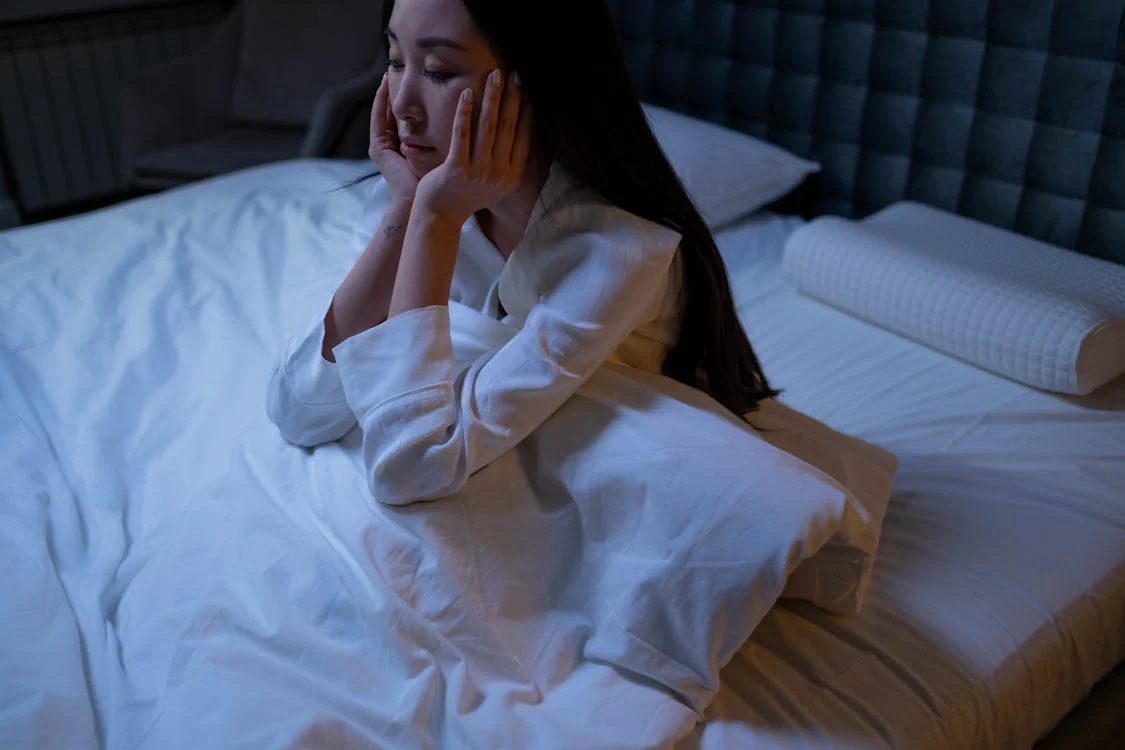It can be highly frustrating to struggle with insomnia. The sleepless nights can feel never-ending, and it’s easy to feel alone in the darkness. But please know that you’re not alone in this battle. Insomnia is a common issue that many people face, and it can take different forms.
That being said, understanding these different forms can be the first step in getting the good night’s sleep you deserve. So, if you’re tossing and turning, counting imaginary sheep, and wondering how to improve sleep quality, know there are ways to get help, and you’ll definitely get through this.
Types of Insomnia
There are two main types; a person can have one or the other, or even both.
Insomnia at the Beginning of Sleep – AKA “The Elusive Sleepy State”
Ever lay in bed, feeling like you’re the star of your personal sequel to “The Princess and the Pea”? Every tiny wrinkle in the sheets feels like a boulder, and every creak of the house sounds like a full-on construction site? Yep, welcome to the world of insomnia at the beginning of sleep.
This type of insomnia is all about the struggle to get to sleep. Your bed suddenly becomes the most uncomfortable place on earth, and no matter how many times you toss and turn, sleep just keeps playing hard to get. It’s like trying to catch a butterfly with a fishing net – frustrating, to say the least.
Insomnia During Sleep – AKA “The Midnight Riser”
Then, there’s the other side of the insomnia coin – the kind where you fall asleep just fine, only to find yourself wide awake at 3 AM, contemplating the mysteries of the universe. One moment, you’re dreaming about winning the lottery, and the next, you’re wide-eyed and wondering if you left the stove on.
It’s like being at a party where everyone else is asleep, and you’re the only one still dancing to the soundtrack of your racing thoughts. You try everything – deep breathing, rearranging your pillows for the hundredth time, even attempting to bore yourself to sleep by mentally reciting the periodic table. But nope, sleep remains an elusive beast.
The Diagnosis Dilemma: When Is It Really Insomnia?
Now, before you go self-diagnosing based on that one restless night last week, let’s talk about the official criteria for diagnosing insomnia. According to the sleep experts, you might have insomnia if:
- You regularly have trouble falling asleep or staying asleep;
- This sleep trouble causes you distress or impairs your daily functioning;
- Nocturnal insomnia happens at least three times a week for more than three months
- You’ve ruled out other possible sleep disorders or medical conditions that might be causing your sleep woes.
So, if you’re just a one-time victim of a late-night Netflix binge or a particularly spicy dinner, you might not need to sound the insomnia alarm just yet. But if you recognize several of the insomnia symptoms, it might be time to take some action and find out how to improve the quality of sleep.

Tips and Tricks for Taming the Insomnia Monster
Now that we’ve identified our sleep-stealing culprit, what can we do about it? Here are some tips and tricks to help you kick insomnia to the curb and cozy up to a good night’s sleep:
Create a Sleep Sanctuary
Think of your bedroom as your sleep sanctuary – a zen garden for your weary mind. This means ditching the screens (yes, even your beloved phone), keeping the room cool and dark, and investing in a comfy mattress and pillows that make you feel like you’re sleeping on a cloud.
Stick to a Routine
Our bodies love routine, even if our rebellious minds sometimes protest. Try to go to bed and wake up at the same time every day, even on weekends. This helps regulate your body’s internal clock, making it easier to fall asleep and wake up naturally.
Unleash the Power of Relaxation Techniques
When sleep feels like a distant dream, it’s time to bring out the big guns of relaxation. Experiment with meditation, deep breathing exercises, or progressive muscle relaxation to calm your mind and body before hitting the hay. Imagine each exhale as a gentle wave carrying you closer to dreamland.
Watch Your Caffeine Intake
While that mid-afternoon latte might feel like a lifesaver, it could be sabotaging your bedtime plans. Try to limit caffeine intake, especially in the afternoon and evening. Opt for calming herbal teas instead, like chamomile or peppermint, to soothe yourself into a sleepy state.
Embrace the Darkness (and Silence)
Our bodies are programmed to sleep in darkness, so do your best to create a cave-like environment in your bedroom. Invest in blackout curtains or a sleep mask to block out any pesky light pollution. And if noise is an issue, consider earplugs or a white noise machine to lull you into dreamland.
Say No to Late-Night Snacking
As tempting as that tub of ice cream might be at midnight, eating heavy or spicy foods too close to bedtime can wreak havoc on your digestive system and keep you up at night. Try to avoid large meals right before bed and opt for lighter, sleep-friendly snacks if you must indulge.
Get Moving (But Not Right Before Bed)
Exercise is a powerful tool in the battle against insomnia, but timing is everything. Try to get your sweat on earlier in the day, as exercising too close to bedtime can actually rev up your system rather than wind it down. A morning yoga session or an afternoon walk in nature can work wonders for your sleep later on.

CBT-I Method
Cognitive Behavioral Therapy for Insomnia (CBT-I) – the Jedi master of sleep therapies. This is one of the most effective non-medicinal insomnia treatment methods. If you wonder how to sleep better at night naturally, this method is right for you. These tips are straight from the pages of “Why We Sleep?” by the American professor of neuroscience and psychology, Matthew Walker.
Tip 1: Restrict Your Time in Bed
One of the fundamental principles of CBT-I is to strengthen the association between your bed and sleep. This means no more lying in bed tossing and turning for hours on end. If you find yourself unable to fall asleep after about 20 minutes, get out of bed and do something relaxing in dim light until you feel sleepy.
Tip 2: Gradually Adjust Your Sleep Schedule
Remember when we talked about the importance of routine? Well, CBT-I takes this to the next level. Gradually adjust your sleep schedule to align with your body’s natural rhythms. This means going to bed and waking up at the same time every day, even on weekends (yes, we know, you’ve already heard this, but it’s that important!).
Tip 3: Challenge Your Negative Thoughts About Sleep
CBT-I teaches you to challenge those negative thoughts that keep you up at night. Instead of worrying about not being able to sleep, reframe your thoughts to focus on relaxation and acceptance. It’s like training your brain to be its own sleep coach, guiding you gently into dreamland.
Tip 4: Get Out in the Sunlight During the Day
Our bodies love sunshine almost as much as cats love cardboard boxes. Exposure to natural light during the day helps regulate your body’s internal clock, making it easier to fall asleep at night. So, take a walk outside, bask in the sunlight, and let your body soak up those vitamin D rays.
Tip 5: Practice Mindfulness Meditation
Mindfulness isn’t just for yoga retreats and hippie communes – it’s a powerful tool for improving sleep as well. Studies have shown that mindfulness meditation can reduce insomnia symptoms and improve the overall quality of sleep. Spend a few minutes each day practicing mindfulness, whether through guided meditation apps or simply focusing on your breath.
Tip 6: Seek Professional Help if Needed
Last but certainly not least, don’t be afraid to seek professional help if your insomnia persists. A trained therapist can guide you through the principles of CBT-I in a structured and personalized way. Remember, there’s no shame in asking for help, and your future well-rested self will thank you for taking action.
Sweet Dreams Are Made of These…
Remember, it’s not just about the quantity of sleep but the quality. So, experiment with these tips, find what works best for you, and don’t lose hope. The path to sweet dreams might have a few twists and turns, but with a dash of mindfulness and a sprinkle of humor, you’ll be drifting off into dreamland before you know it.
